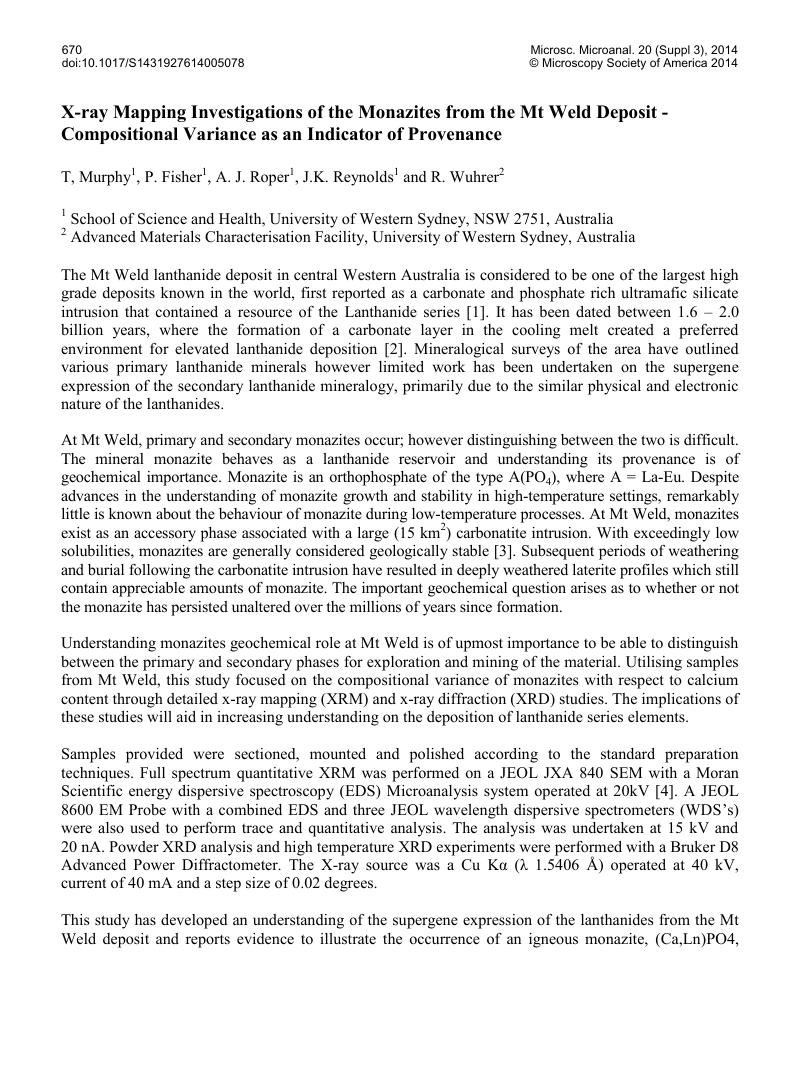No CrossRef data available.
Article contents
X-ray Mapping Investigations of the Monazites from the Mt Weld Deposit - Compositional Variance as an Indicator of Provenance
Published online by Cambridge University Press: 27 August 2014
Abstract
An abstract is not available for this content so a preview has been provided. As you have access to this content, a full PDF is available via the ‘Save PDF’ action button.

- Type
- Abstract
- Information
- Microscopy and Microanalysis , Volume 20 , Supplement S3: Proceedings of Microscopy & Microanalysis 2014 , August 2014 , pp. 670 - 671
- Copyright
- Copyright © Microscopy Society of America 2014
References
[1]
Bunting, J A., van de Graaff, W. J. E. and Jackson, M J. Palaeodrainages and Cainozoic palaeogeography of the eastern Goldfields, Gibson Desert and Great Victoria Desert. Geological Survey of Western Australia Annual Progress Rep (1973) pp. 45–50.Google Scholar
[2]
Michard, A. Lanthanide series Systematics in Hydrothermal Fluids. Geochemical Society and the Meteoritic Society. 53. Published by Elsivier (1989) pp 745–750.Google Scholar
[3]
Willett, G. C., Duncan, R. K., and Rankin, R. A. “Geology and economic evaluation of the Mt. Weld carbonatite, Laverton, Western Australia.” Geol Soc Australia Abstract. Vol. 16 (1986) pp. 97–99.Google Scholar
[4]
Wuhrer, R., Moran, K., Moran, L. “Characterisation of materials through X-ray mapping.”Materials Forum (2006) vol. 30.Google Scholar




